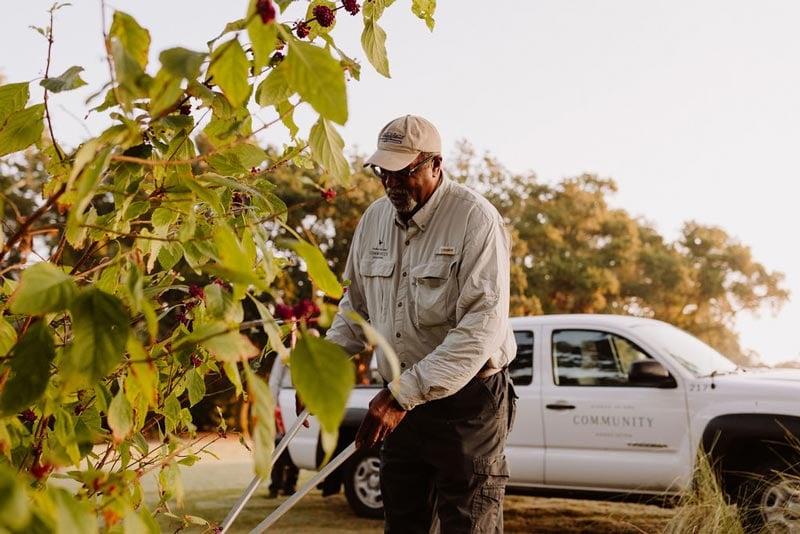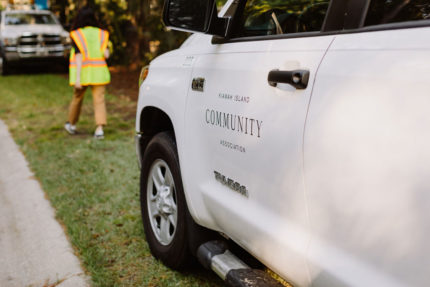Jan
13
2006
From The Blog
Johns Island Infrastructure Planning: Past and Present
Johns Island Infrastructure Past: 1998 – 2002
As TOKI Mayor, Jim Piet had his eye firmly fixed on the target. His basic principle was “to ensure that property owners’ desires were heard and met,” and he worked hard during his two terms from 1998 to 2002 to achieve that goal. One of the issues that Mayor Piet focused his attention on was safe and convenient transportation between Kiawah and the West Ashley/Charleston area.
Supported by the rest of the Council, and particularly TOKI Council members, Jack Pulleyn, Beverly Leibman, and Ed Morgan, Mayor Piet began establishing contacts with regional and local entities to explore solutions to the Kiawah infrastructure access problem. T e Charleston/Dorchester/Berkeley County governmental group, the Council of Governments, proved to be the most helpful and sympathetic organization. Th e Council of Governments provided Jim Piet and his colleagues with advice as well as invaluable topographical and financial information as they sought to improve access to Kiawah. Th e fi rst step was the construction of the new Stono and Limehouse Bridges onto Johns Island. Then, operating under the assumption that the I-526 expressway would eventually be completed, the key question was how that completion could most easily benefit Kiawah.
While the tentative plans suggested in the mid 1980’s for the I-526 completion called for the expressway to make a southward sweep into Johns Island and then turn sharply left to cross the Stono River and connect with the James Island expressway, the question remained of how KICA members and visitors would access the completed expressway. Th ere were only three ways to improve Kiawah access: a) make Bohicket Road four lanes from Maybank Highway to Betsy Kerrison, b) make River Road four lanes from Maybank Highway to Betsy Kerrison, c) build a new road down the center of Johns Island connecting a completed I-526 with Betsy Kerrison. All three proposals had inherent difficulties and encountered determined opposition. Engineering and environmental problems with expanding Bohicket or River Road were daunting to say the least. Both roads were sheltered by ancient live oaks that could not be removed, and the need to remove adjacent churches, schools and dwellings presented overwhelming obstacles. As a result, Mayor Piet and the TOKI Council concluded that a road cutting directly across Johns Island from a completed I-526 Expressway would be the best solution to the problem. Charleston County officials agreed, and provided $128,000 to study the proposed routes and provide engineering data.
The Kiawah access problem proved, however, to be far greater than simply preserving scenic roads and plotting a direct route between two points.
From the outset, Mayor Piet and his colleagues encountered stiff opposition from Johns Island residents to the suggestion of altering the island’s infrastructure. Jim Piet did not, however, give up pursuing his goal of improving access to Kiawah. Continuing to work with the Council of Governments and other interested parties, he campaigned to complete the I-526 expressway in hopes that other transportation changes would follow. By 2001, the eff orts of the group Mayor Piet spearheaded persuaded the Charleston County Council to press the South Carolina Infrastructure Bank for funding of the I-526 completion. Th e recent promise of $420 million by the state to complete the project was the end result.
Former Mayor Piet was understandably disappointed that his long struggle to make transportation to Kiawah safer and more convenient was not completed. He is, however, gratified to know that the two new bridges were built and that I-526 will be completed. Moreover, he is optimistic that the expansion of Maybank Highway to four lanes in the near future will eventually lead to the completion of improved access across Johns Island to Kiawah.
Johns Island Infrastructure Present: 2002 – 2006
Anyone who drove east on Maybank Highway toward Charleston in mid-November 2006 probably noticed the marquee at a garage near the Johns Island Post Office. Th e marquee encouraged viewers to “Stop the Mark Clark.” It’s a concise statement of one half of the differing views on the current and future status of Johns Island infrastructure. On Thursday, November 16, 2006, Digest met with Town of Kiawah Island Councilman Alan Burnaford, who has spent countless hours over the last few years studying the Johns Island infrastructure issue and discussing it with various parties at the state, regional, and local levels. He is cautiously optimistic about future improvements to Johns Island roadways.
In 2002, Mr. Burnaford was appointed to the Town’s Planning Commission by Mayor Jim Piet, and then was elected Chair of the Planning Commission in 2003. In 2004, he was elected to the TOKI Council. His planning experience naturally thrust him into the forefront of issues surrounding Johns Island developmental questions.
Appointment to the Planning Commission quickly familiarized Mr. Burnaford with the major problems involved in traversing Johns Island. Th e longer he served, the more he learned about land use and zoning issues. Determining the obstacles to be overcome, which individuals were key in finding solutions to problems, and what might realistically be possible occupied a
great deal of his time. Once he was elected to Town Council, the Mayor assigned Mr. Burnaford responsibility for TOKI’s public safety and communications eff orts. As a result, he soon found himself in touch with groups such as the South Carolina Coastal Conservation League that proved crucial in understanding how infrastructure changes might be planned.
Ties were quickly established with the Seabrook Island Town Council, and a dialogue began, and continues, about how to ensure safe travel on Johns Island in the face of ongoing development. Everyone involved understood that a consensus agreement from the Johns Island community would be crucial in order to lobby the Charleston County Council, which ultimately has oversight over development and infrastructure changes. Leon Stavrinakis, the former County Council chair, who was elected to the State Legislature in November 2006, was very helpful in framing plans for Johns Island in the context of completing the Mark Clark Expressway. He will also be an important ally in Columbia when planning reaches the point of practical application. Paul Thurmond, who will replace Mr. Stavrinakis on County Council, will also be a valuable resource.
Most of Councilman Burnaford’s work depended on meeting with interested parties and providing a sympathetic ear for the many conflicting views on how Johns Island development should occur. He met with groups such as the South Carolina Coastal Conservation League, the Johns Island Council, the Seabrook Town Council, and various governmental agencies. At one point he, along with members of the South Carolina Coastal Conservation League, convinced a representative of the SCDOT to join them for a tour of Bohicket Road to point out safety concerns and discuss the possibility of widening Bohicket.
He has also met with key individuals such as Tom Legare, Merrill Irvin, Martha Craft-Essig, Andrew Geer, and Chris Cannon, who were, and remain, passionately involved in shaping the future of Johns Island. Th e result of Mr. Burnaford’s research, meetings, and discussions led him to one conclusion: Johns Island will definitely be developed and the process should be carefully planned and executed with input from Johns Islanders.
In his view, the key to the development lay in minimizing damage to the natural beauty of the island while maximizing traffic safety. Accordingly, the extension of Betsy Kerrison along Bohicket Road to Maybank Highway soon became an option to pursue, which is an approach that runs counter to the one advocated by Mayor Piet several years earlier. Mr. Burnaford’s view of widening Bohicket Road, however, needs broad-based support from Johns Island residents, the Coastal Conservation League, and local, regional and state officials. In his opinion, this alternative approach offers the most efficient, safest, and least damaging way to help solve one of Johns Island’s major infrastructure problems. In sum, current thinking is that cutting down the center of Johns Island from Maybank Highway to Betsy Kerrison would be too disruptive to island life and too costly in acquiring rights-of-way.
Similarly, making River Road four lanes wide would be more costly because of the longer distance involved and the lack of support from Johns Islanders. Ultimately, KICA members, as well as Seabrook and Johns Island property owners, should prepare themselves for travel changes during the next few years. Maybank Highway is going to be expanded to four lanes from the end of the Stono Bridge to Main Road. While some interested parties have concerns about these infrastructure changes, and other parties welcome them as controlled responses to serious problems, the only thing that is certain is that infrastructure change is on the way. Municipal, local, regional, and state authorities are working hard to fi nd the safest and most cost effective solution to a daunting traffic problem, and there is every reason to suspect that they will be successful.

